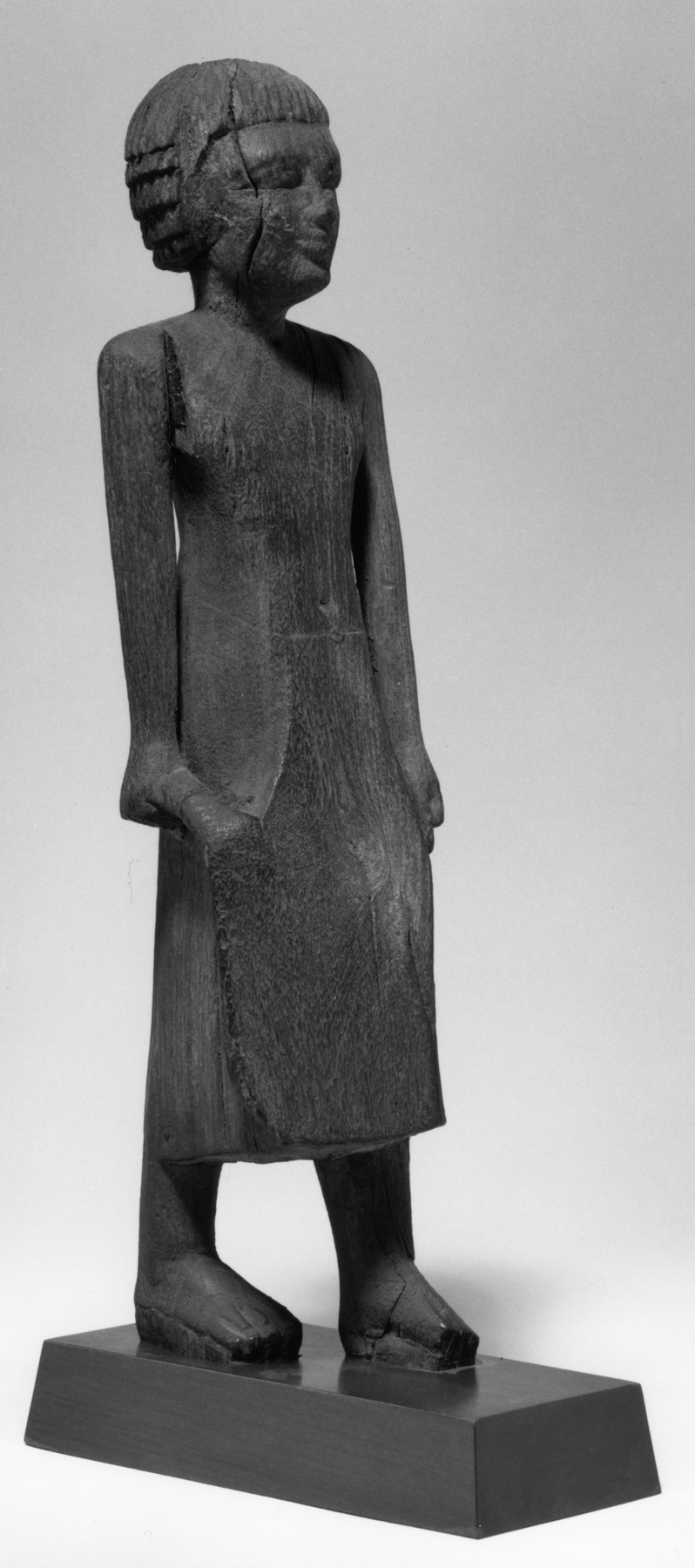Male Figure Standing
Ancient Egyptian men were generally represented in their tomb figures wearing a short or long kilt. Here, the deceased is shown holding a corner of the kilt with his right hand, a gesture that became popular during the late Old Kingdom. The statue is made of soft wood and has lost all of its paint.
Provenance
Provenance (from the French provenir, 'to come from/forth') is the chronology of the ownership, custody, or location of a historical object. Learn more about provenance at the Walters.
Said Bey Khashaba, Cairo Museum [date of acquisition unknown], by excavation; Dikran Kelekian, New York and Paris [date and mode of acquisition unknown]; Henry Walters, Baltimore, 1924, by purchase; Walters Art Museum, 1931, by bequest.
Exhibitions
| 2004-2005 | Carved for Immortality. The Walters Art Museum, Baltimore. |
Conservation
| Date | Description | Narrative |
|---|---|---|
| Examination | examined for exhibition | |
| 6/2/1981 | Examination | examined for condition |
Geographies
Egypt, Meir
(Place of Origin)
Egypt, Asyut (Place of Discovery)
Measurements
H above base: 11 5/16 in. (28.7 cm)
Credit Line
Acquired by Henry Walters, 1924
Location in Museum
Not on view
Accession Number
In libraries, galleries, museums, and archives, an accession number is a unique identifier assigned to each object in the collection.
In libraries, galleries, museums, and archives, an accession number is a unique identifier assigned to each object in the collection.
22.25


